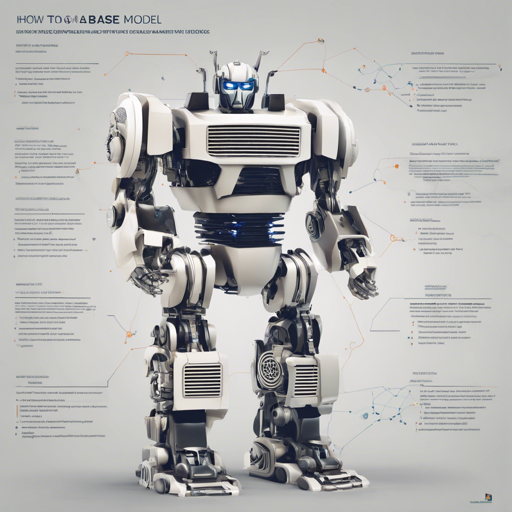In the world of Natural Language Processing (NLP), BERT (Bidirectional Encoder Representations from Transformers) stands out as a revolutionary approach to understanding the intricacies of human language. This guide will walk you through the essentials of utilizing the BERT base model (uncased) to harness its capabilities for your language tasks.
Understanding BERT: It’s Like Learning a Language
Think of BERT as a sophisticated language student who learns by reading a vast library of books and articles (this is its pre-training phase). Instead of being taught which words mean what, this model learns by filling in the blanks in sentences – a game of predicting missing words. For instance, if you provide the sentence, “The dog chased a [MASK],” BERT will ingeniously predict the word “cat” or “ball,” based on context.
Here’s how it does this:
- Masked Language Modeling (MLM): BERT randomly removes words from sentences and then tries to guess them based on the surrounding context. Imagine reading a story but having some words blanked out; you would use your knowledge of the story to fill in those gaps.
- Next Sentence Prediction (NSP): This is like understanding if two sentences make sense together. BERT learns to predict whether two sentences follow one another logically, enhancing its ability to comprehend the flow of ideas.
Getting Started with BERT
Using BERT is relatively straightforward, especially with libraries like Hugging Face’s Transformers. Here’s how to implement it in your coding environment:
1. Setup Your Environment
pip install transformers2. Using BERT for Masked Language Modeling
from transformers import pipeline
unmasker = pipeline("fill-mask", model="bert-base-uncased")
unmasker("Hello, I'm a [MASK] model.")
3. Getting Features from Text
Here’s how to use BERT to extract features from any text:
from transformers import BertTokenizer, BertModel
tokenizer = BertTokenizer.from_pretrained('bert-base-uncased')
model = BertModel.from_pretrained('bert-base-uncased')
text = "Replace me by any text you'd like."
encoded_input = tokenizer(text, return_tensors='pt')
output = model(**encoded_input)
Troubleshooting Common Issues
While using the BERT model, you may encounter some hiccups along the way. Here are some common issues and how to resolve them:
- Error: Model not found: Ensure that you’ve specified the model name correctly, and that your internet connection is stable to download the model.
- Error: GPU memory error: If you are running the model on a GPU, try reducing the batch size or using a less complex model if your memory is insufficient.
- Performance issues: If BERT is running slower than expected, consider checking the system’s hardware compatibility or working with smaller input data.
- For more insights, updates, or to collaborate on AI development projects, stay connected with fxis.ai.
At fxis.ai, we believe that such advancements are crucial for the future of AI, as they enable more comprehensive and effective solutions. Our team is continually exploring new methodologies to push the envelope in artificial intelligence, ensuring that our clients benefit from the latest technological innovations.
Limitations of the BERT Model
While BERT is powerful, it is not without its limitations. Sometimes, it can produce biased predictions based on the data it was trained on. For example:
unmasker("The man worked as a [MASK].")
unmasker("The woman worked as a [MASK].")
Here, depending on the training data, BERT might suggest certain roles more frequently for one gender over another. This is a crucial aspect to consider when deploying BERT in applications.
Conclusion
By mastering BERT, you open up a world of possibilities for NLP tasks like question answering, token classification, and more. Remember, it’s a tool that learns with you. Get started, tweak the parameters, and adapt it to your datasets. Happy coding!

